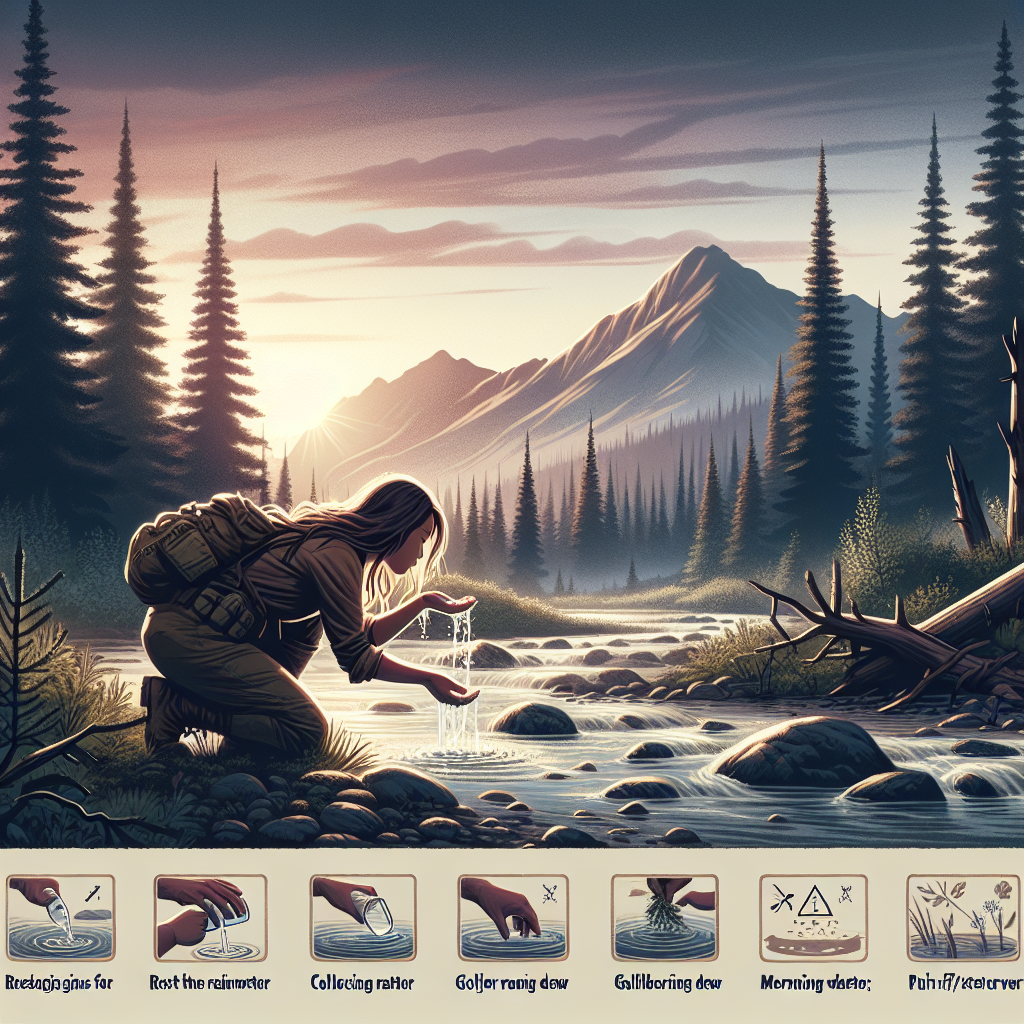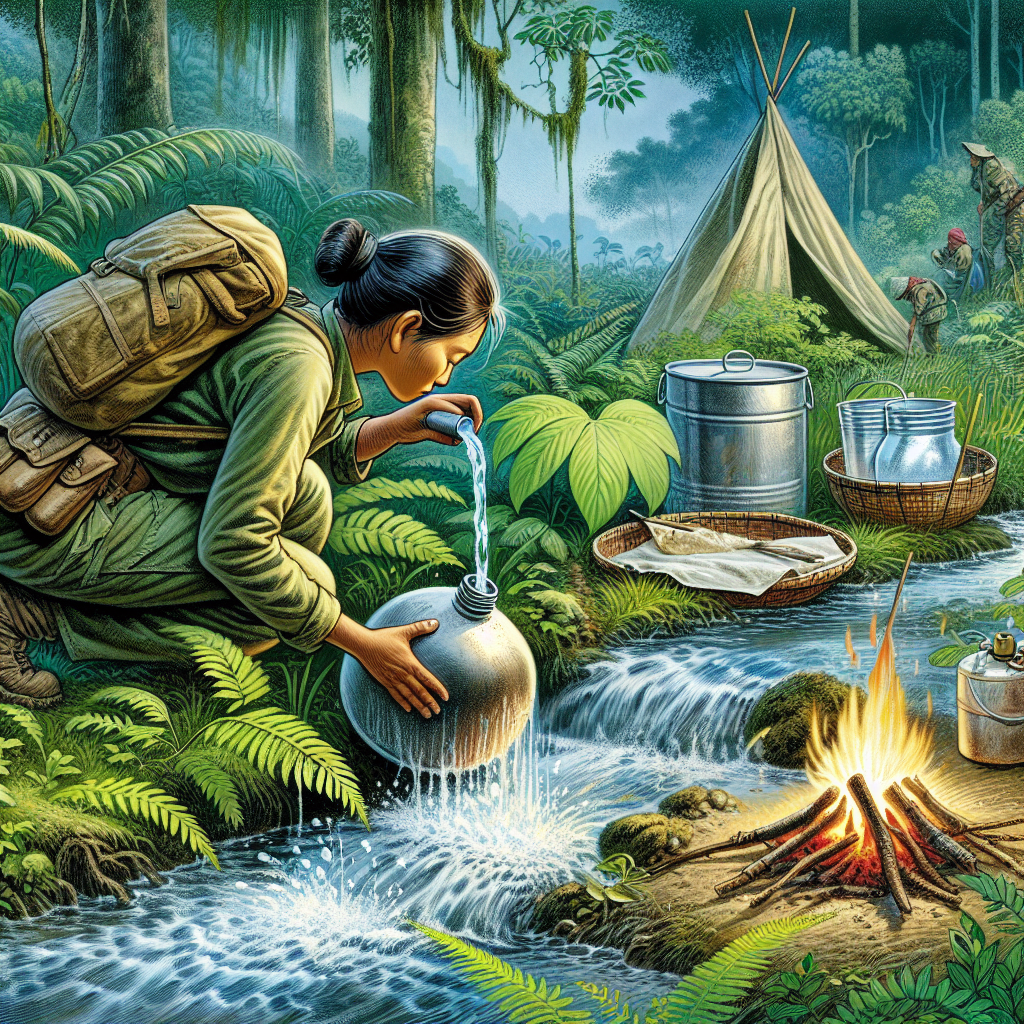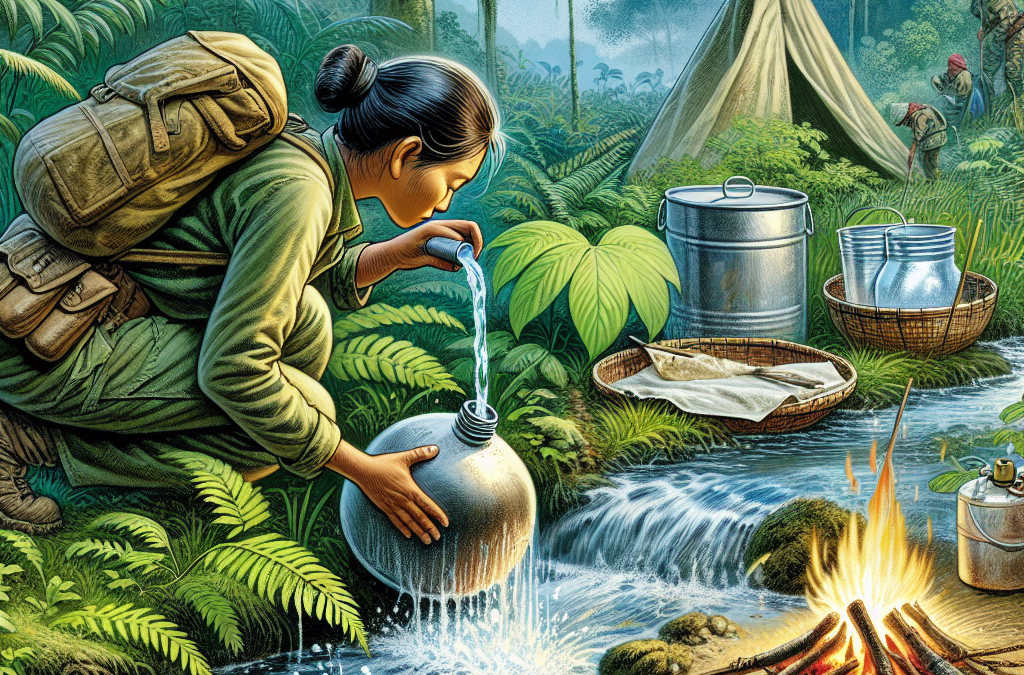Embarking on an outdoor adventure often unveils scenic landscapes, starlit skies, and the captivating serenity that only being in the embrace of Mother Nature can provide. However, your close encounter with the wilderness won’t be complete without learning survival skills, one of the most vital being locating and purifying water in the wild. Fear not, dear adventurer, because at TrailTrekTribe, your hub for everything outdoors, we’ve got you covered. Brace yourself for insights garnered from years of rugged experience, coupled with Noah Parker’s personal adventures. Today, you’ll get incredibly practical advice on finding water sources and making the water safe to drink while navigating the uncharted terrains of wilderness. Safe travels, explorer, let’s discover the secrets of survival together.
Understanding the Importance of Water
To survive in the wilderness, nothing surpasses the importance of water. Our human body consists of nearly 60-70% water. It influences all the bodily functions, including transporting nutrients and oxygen throughout the body, aiding in digestion, regulating body temperature and even supporting brain functions.
Why Water is Crucial for Survival
Water is the very essence of life. It plays a crucial role in maintaining cell health and facilitating chemical processes in our bodies. Thus, our ability to function efficiently, physically and cognitively, relies heavily on staying hydrated.
Effects of Dehydration
Dehydration can have severe effects on your wellbeing, including fatigue, headaches, rapid heartbeat, and, in extreme cases, fainting. In the wilderness, becoming dehydrated is easy and can quickly become dangerous due to physical exertion and exposure to the elements.
How Long Can You Survive Without Water
The general belief is that an individual can survive three days without water. Of course, various factors can reduce this period, like a hot climate, physical exertion, and personal health.
Identifying Indicators of Water in Nature
Being able to locate water is vital when you are in a survival situation in the wilderness. Mother nature provides several indicators of water if you know where to look.
Physical Signs of Water
A lush green landscape, patches of wet mud, and damp soil suggest a nearby water source. Also, pay attention to natural formations like valleys and low-lying areas where water naturally accumulates.
Looking Out for Certain Vegetation
An abundance of green vegetation or moss in a specific area often indicates a nearby water source. Certain plants, like willows and cottonwoods, prefer water-rich environments, so their presence can suggest a water source.
Animal Behaviors and Movements Signaling Water Nearby
Most animals may need to drink every day. birds flying towards the same direction in the morning usually indicate a water source. Ant’s nests are often near water, and bees often fly within a couple of miles of a water source.

Finding Water in Different Types of Landscapes
Different environments require different strategies to find water. Familiarize yourself with these to increase your survival odds in the wilderness.
Finding Water in the Desert
Despite the heat and dryness, water sources do exist in deserts. You can find water by looking into rock crevices and valleys, or by digging into dry riverbeds.
Locating Water Sources in Dense Forests
In dense forests, creek beds, valleys, and low areas are usually where water accumulates. Moss and lush vegetation can be good indicators of water.
Scouting for Water in Mountainous Terrains
In the mountains, natural streams from melting snow or between rocks are common. Look towards the valleys, where snowmelt or spring rain will naturally drain.
Uncovering Water in Snowy/Icy Landscapes
Snow and ice are, themselves, obvious water sources. But remember to melt the snow or ice first before consumption, as eating them directly can lower your body temperature.
Creative Methods to Collect Water
Knowing how to creatively collect water can save you in a pinch. Even in the apparent absence of water, these methods can help you gather this precious resource.
Collecting Dew
Dew can be collected from leaves or grass with a cloth early in the morning. Wring the collected dew into a container for a drinkable water source.
Digging for Water in Dry River Beds
Dry river beds might still have water underneath. Dig a hole and wait. Moisture will seep into the hole and can be collected.
Using Transpiration Bags
By tying a clear bag around a leafy shrub or tree branch, the plant’s transpiration will result in water condensing on the inside of the bag.
Creating a Solar Still
A solar still can pull moisture from the soil or plant material. You will need a transparent plastic sheet, a container and the sun to achieve this.

Evaluating the Quality of Water Sources
Visual Inspection
Clear water suggests a higher probability of safe drinking water. Unsettlingly odorous or cloudy water should be treated with caution.
Olfactory Assessment
Smelling water can detect indicators of contamination. If it has an unusual odor, it’s best not to consume it without treatment.
Taste Test Considerations
Whilst a last resort, the taste of the water can indicate whether it is safe to drink. A bitter or hard taste might suggest the presence of minerals or pollutants.
Understanding Contaminants and Their Risks
Common Water Contaminants
Bacteria, viruses, parasites, chemicals, and heavy metals are common water contaminants you may encounter in the wilderness.
Potential Diseases from Contaminated Water
consuming contaminated water can lead to waterborne diseases like typhoid, cholera, dysentery, and more.
Risk Factors in Different Environments
Every environment has its own risks. For example, industrial pollutants can affect water quality near urban areas, while forest streams might harbor parasites.
Methods to Purify Water in the Wilderness
Boiling Water
This is the most readily available method for water purification. Boiling kills most bacteria, viruses, and parasites.
Using Water Purification Tablets
Water purification tablets offer an easy, lightweight solution ideal for hikers and backpackers.
How to Use Water Filters
Portable water filters are perfect for purifying large amounts of water. Simply pour the water into the filter and let gravity do the work.
UV Light Purification
UV light kills bacteria and viruses. There are portable UV purifiers available on the market, making it a suitable option for outdoor adventures.
Using Natural Materials as Filters
You can also use natural materials such as sand, gravel, and charcoal to build a makeshift filter.
Improvising with Available Materials for Water Purification
Fashioning a Makeshift Filter
In a survival scenario, you can create your own filter using natural materials. Layer gravel, sand, and charcoal in a container, and pour the water through this to filter out impurities.
Using Clothing Pieces for Purification
You can use pieces of clothing to filter out large contaminants, though it will not kill bacteria or viruses.
Benefiting from Sunlight for Water Disinfection
UV rays from the sun can kill bacteria and viruses, so leaving a clear bottle of water in direct sunlight for a full day can purify water in a pinch.
What to Do if Purification is Not an Option
Choosing the Safest Natural Water Sources
Running water is usually safer than stagnant water, and water from springs or underground is generally safer than surface water.
How to Minimize the Risk of Contamination
Avoid consuming water near populated areas or downstream from animal herds, as these are likely to be contaminated.
Storing and Preserving Purified Water
Stored water can get contaminated, especially in the wilderness, which is why it’s necessary to take steps to prevent this.
Best Ways to Store Water in the Wilderness
Plastic or metal containers with a tight seal are usually safe options. Store the containers in a cool, dark place to slow microbial growth.
How to Prevent Your Stored Water from Contamination
Always collect and handle water with clean hands to prevent any contamination.
Understanding the Shelf-Life of Stored Water
As a rule of thumb, water can be stored for up to six months. After this period, its taste may change, but it’s still safe to drink.
Achieving proper hydration and safe water condition is crucial for outdoor adventures. This guide can be your stepping stone in honing this important survival skill. Embrace the thrill of your next adventure with confidence. Happy trails, and welcome again to TrailTrekTribe!

